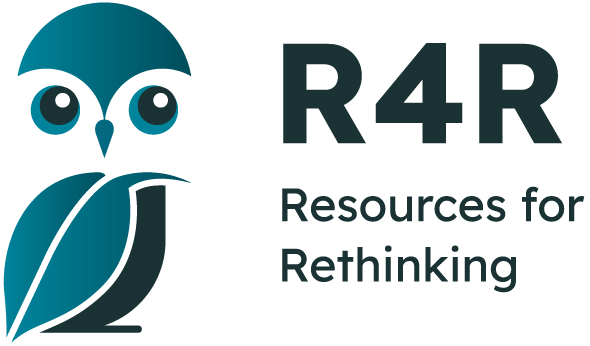Search for Resources

Resources
-
Message in a Book: People Forced to Flee
Created in partnership with Schools for Sanctuary, “ Message in a Book: People Forced to Flee” enables learners to think about our fundamental human rights, why refugees leave their homes, what challenges they face and how welcoming counties...
Full curriculum matchAvailable for download -
B.C. First Nations Studies Guide
The Teacher's Guide was designed to support teachers using the student resource book, B.C. First Nations Studies. The Guide consists of seventeen chapters but this review is limited to the first three chapters; The Land, Living on the Land, and Sharing...
Full curriculum matchAvailable for download -
Understanding Sustainable Living
The lesson plan consists of a series of activities designed to introduce students to the concept of sustainable development and "ecological accounting." Students measure their own ecological footprint and compare it to others as a means of calculating...
Full curriculum matchAvailable for download -
Biodiversity is Best
This inquiry-based unit has students investigate how conserving and protecting our water supply impacts the biodiversity and sustainability of ecosystems. Using a series of brainstorming activities, videos, hands-on learning opportunities, an interactive...
Full curriculum matchAvailable for download -
Nourish Curriculum Guide
The goal of this curriculum is to actively engage students in a meaningful conversation about food and food systems. The seven activities included in the Guide give students opportunities to reflect on current food practices, to explore more sustainable...
Full curriculum matchAvailable for download -
Climate Change 101 with Bill Nye
Climate change is a real and serious issue. In this video Bill Nye, the Science Guy, explains what causes climate change, how it affects our planet, why we need to act promptly to mitigate its effects, and how each of us can contribute to a solution.
Full curriculum matchAvailable for download -
Can Wildlife Adapt to Climate Change?
With rising temperatures and seas, massive droughts, and changing landscapes, successfully adapting to climate change is increasingly important. For humans, this can mean using technology to find solutions. But for some plants and animals, adapting to...
Full curriculum matchAvailable for download -
What's Happening to Honey Bees?
Honey bee operations are in sharp decline throughout North America and Europe. Many large beekeeping operators are reporting that up to 40 or 50 percent of their swarms have mysteriously disappeared. This fast-paced and entertaining video introduces...
Full curriculum matchAvailable for download -
What Would It Look Like?
Students are presented with some of the negative consequences of consumerism and globalization. The video begins by posing the question, What would the world look like if it embodied our highest potential. It then provides a bleak picture of our...
Full curriculum matchAvailable for download -
Acid ocean
As we burn fossil fuels carbon dioxide is seeping into the oceans. The result is ocean acidification that is threatening marine life. In this segment of the Water Brothers series, the hosts take us to the Pacific Northwest to meet scallop and mussel...
Full curriculum matchAvailable for download -
Water, Water, Everywhere...But Not a Drop to Drink
Canadians are big water users and also are advanced in water treatment and distribution technologies. Yet, in one of the most water rich countries in the world, approximately one out of every five First Nations communities in Canada lacks access to clean....
Full curriculum matchAvailable for download -
Plastics Challenge
In this comprehensive STEM resource students investigate the properties of plastics and find solutions to problems caused by plastic waste globally. The increased use of plastics is creating a huge environmental challenge for both industrialized...
Full curriculum matchAvailable for download -
Food Day Curriculum
This resource teaches students the importance of eating real, fresh food, cutting back on processed foods, and advocating for healthier communities. It links a reliance on processed food with increased carbon footprints and emphasizes that the students...
Full curriculum matchAvailable for download -
Snail Inquiry l
This inventive lesson supports inquiry through a practical approach that engages students in observing the fascinating world of garden snails. Learning involves studying physiological features, analyzing environmental relationships and developing...
Full curriculum matchAvailable for download -
Nesting, Nests and Building a Home for Birds
The nesting habits of birds are examined in this inquiry-based lesson that cultivates curiosity and promotes respect for the natural world. As students explore the unique features of bird nests they actively participate in the learning process...
Full curriculum matchAvailable for download -
Bees in the Edible Schoolyard: No Hive
Bees are the focus of this outdoor inquiry that engages students in learning about plant reproduction and these remarkable insects in their natural habitat. Students locate and safely catch bees to observe structural features before releasing them...
Full curriculum matchAvailable for download -
Earth We're in it Together
This upbeat music video reminds us that we only have one earth and as citizens of the world we must all care about the environment The appealing lyrics will have students singing along as they consider how their actions can impact our planet. ...
Full curriculum matchAvailable for download -
Why Would Anyone Cut a Tree Down?
Trees and humans have a special connection richly illustrated by the vibrant paintings in this electronic book. As students learn about the impressive ecological and social benefits of trees they are also reminded that trees are living organisms...
Full curriculum matchAvailable for download -
A Healthy Start
Poverty and the associated impact on children’s health is a complex global issue that affects both developed and developing countries. Canadian citizens have access to universal health care yet childhood obesity rates are climbing and sports...
Full curriculum matchAvailable for download -
Pumpkin Patch Math
The math concepts of counting, estimation and statistics come to life in an outdoor learning experience that also fosters interest in gardening and nature. As students extract seeds from pumpkins, they use a wide range of math skills to answer questions...
Full curriculum matchAvailable for download

